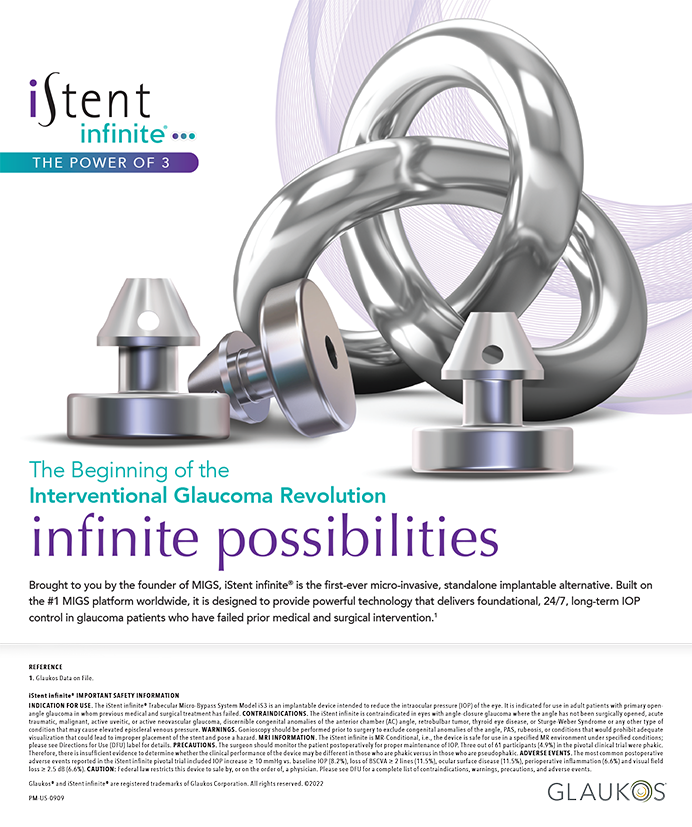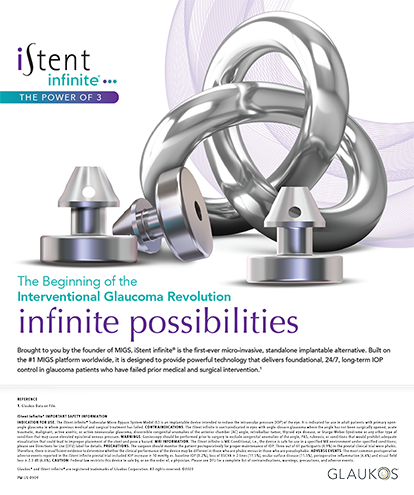As in most professions, change is often not apparent until a retrospective view reveals the great advances that have actually occurred over time. Below, please find lists of topics that should encourage healthy controversy. The answers to some of these points are sure to change the practice of anterior segment surgery for every surgeon within the next 5 years. Throughout the upcoming year, I will cover many of these issues in this column. Hopefully, many of the items on these lists will be provocative enough for the reader to reaffirm a current mode of practice or to change where improvement is desired.
KERATOREFRACTIVE SURGERY
- What is the appropriate dioptric limit for LASIK to be able to maintain an adequate quality of visual function?
- What is the appropriate limit for surface ablation to be able to maintain an adequate quality of visual function?
- Do very thin LASIK flaps create more irregular astigmatism in higher-diopter cases?
- Do I ever perform LASIK on corneas with preexisting corneal irregular astigmatism?
- Can a valid customized ablation profile be created for a cornea with irregular astigmatism?
- Which parameters determine that LASIK is not indicated?
- Do I treat mild keratoconus with myopic PRK?
- Have I experienced a case of post-LASIK ectasia within the past 3 years?
- Would I implant an approved anterior chamber phakic IOL for high myopia or hyperopia?
- Has any treatment regimen not involving steroid or anesthetic drops significantly changed the incidence of dry eye complaints following keratorefractive surgery?
- Do I use low-concentration topical anesthetic for postoperative pain (2 to 4 weeks) after keratorefractive surgery?
- Should I improve my informed consent process?
CATARACT/IOL SURGERY
- Is there any added value to a two-handed phacoemulsification technique that employs 1-mm incisions?
- Is there any added value to a 2-mm phaco/IOL wound compared to a 3-mm phaco/IOL wound?
- What is the percentage of patient complaints about bifocal IOLs?
- Would I have a bifocal IOL or a single-vision IOL implanted in my eye?
- At what diopter value does astigmatism significantly affect visual acuity?
- Do I correct astigmatism as part of my phaco/IOL surgery?
- If I perform astigmatic keratotomy, what is my maximum expected stable result?
- Have I ever examined 30 astigmatic keratotomy patients 1 year postoperatively to document the results of this procedure?
PRESBYOPIA
- What is the percentage of patient complaints concerning monovision?
- What is my dioptric limit between eyes in monovision?
- How much "add" effect is achieved with an accommodating IOL compared to a single-vision PCIOL?
- As a non-keratorefractive surgeon, do I expect to implant phakic multifocal IOLs that will correct distance vision and presbyopia when/if they become available?
KERATOPLASTY
- Considering penetrating keratoplasty, does the suture pattern make any difference with respect to final postoperative astigmatism 6 months after suture removal?
- How do I treat postkeratoplasty astigmatism?
- Does lamellar keratoplasty correct keratoconus over a period of 4 years?
- If I perform "endothelial transplantation," do I have five patients that have achieved 20/20 visual acuity postoperatively?
- If I perform "endothelial transplantation," what is the routine postoperative visual acuity?
GLAUCOMA
- Am I satisfied with my success rate of trabeculectomy procedures?
- Do I perform early trabeculectomies mostly to lower the IOP or because of poor patient compliance with medications?
- Would I prefer to use a long-acting (6-month) glaucoma medication instead of performing trabeculectomy?
The intent of these lists is not to offer answers to these important questions, but rather to accentuate many of the key issues confronting the modern anterior segment surgeon. In ophthalmic surgery, improved techniques are not designed first and then implemented as designed; rather, mediocre results are noticed, a newer technique is developed, and then the technique must withstand scrutiny as it is modified. This process is constantly ongoing. It would stop only if all surgeons were totally content with all of their results. Because there is no fear of this occurring, newer and better surgery and treatment regimens are always on the horizon.
Lee T. Nordan, MD, is a technology consultant for Vision Membrane Technologies, Inc., in San Diego. Dr. Nordan may be reached at (858) 487-9600; lasertn@aol.com.


